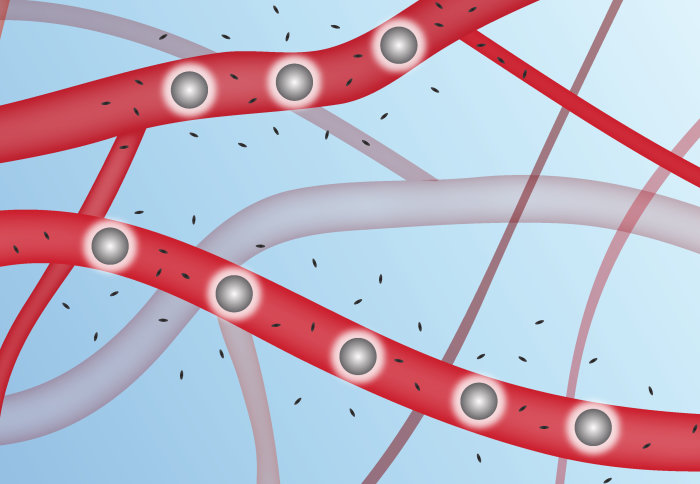Improving our understanding of a new method to deliver drugs to the brain
by Ben Lewis

Delivering drugs to the right part of the body to treat disease can be difficult, and nowhere is more difficult to reach than the brain.
Research from the Vilar and Choi groups has advanced our understanding of how two technologies combined can help to find a new method to overcome this challenge and specifically target drugs and imaging agents into the brain.
This research, just published by Tiffany from the Vilar group in the journal ChemMedChem, improves our understanding of how gold nanoparticles coated with DNA can be delivered to the brain using focused ultrasound waves.
The brain is a difficult target for drugs because of the blood-brain barrier, which strictly limits what can get from the blood into the brain. Designing drugs which the blood-brain barrier will let through is hugely challenging, so it is important to find new ways of getting other drugs into the brain. Ultrasound waves can help to temporarily and safely breach this wall. The waves can be used to make microbubbles introduced to the blood vibrate. If ultrasound waves are targeted in the brain, these vibrations can disrupt the blood-brain barrier. Because we can focus ultrasound waves into a very small area, we can target parts of the brain very specifically for treatment.
This ultrasound can then be combined with nanoparticles. These have been shown previously to be very effective at carrying drug molecules into cells. Whilst the nanoparticles can't cross the blood-brain barrier on their own, they are able to get across when combined with the disruption caused by the ultrasound; potentially allowing them to deliver the drug they are carrying into the brain. In this research paper, gold nanoparticles covered in DNA and focussed ultrasound were successfully combined to get the nanoparticles into the brains of mice. For the first time, this research showed how the size of nanoparticles impacts on their ability to get into the brain. Smaller nanoparticles crossed the barrier more effectively - giving new insight to researchers hoping to use this platform for the delivery of drugs in the future.
Enabling drug delivery to the brain is an important step to being able to better treat diseases such as glioblastoma - a particularly deadly variety of brain cancer. Only through researchers discovering and applying methods such as this will there be a chance of finding the effective treatments for diseases like glioblastoma that are desperately needed.
Article supporters
Article text (excluding photos or graphics) © Imperial College London.
Photos and graphics subject to third party copyright used with permission or © Imperial College London.
Reporter
Ben Lewis
Department of Surgery & Cancer